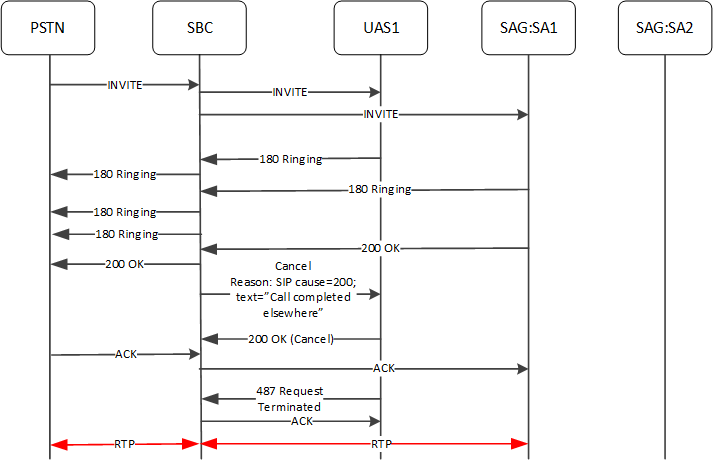Parallel Forking Call Flows
The ESBC supports parallel forking within multiple contexts. These context include adjusting target lists based on FQDN responses, 302 responses as well as LDAP and LRT dips. These contexts provide a framework within which the ESBC invokes parallel forking when triggered. The flow diagrams presented here, therefore, have similar structures with the triggers and results of parallel forking residing within the flows at similar points within each flow, and with similar denotation.
For example, consider the simple call flow presented at the beginning. The basic configuration that produces this flow is below. This same call flow would apply for multiple equivalent functions by changing the next-hop value.
local-policy
from-address *
to-address 2222
source-realm sip192
parallel-forking enabled
policy-attribute
next-hop UAS1
realm sip172
cost 10
policy-attribute
next-hop UAS2
realm core2
cost 10The same call flow would result when using:
- A DNS dip, such as sip.pstnhub.microsoft.com
- An LDAP dip, such as ldap:default-query
- An LRT dip, such as lrt:test1
- A multi-stage lookup, such as:
- next-hop LRT:Test1;key=$TO
- lookup multi
Parallel Forking and 302 Response
Consider the scenario wherein the ESBC engages parallel-forking with one of the target stations replying with a 302: Moved. In this case the ESBC responds to the 302 by using the new station within the parallel forking step. The system removes UAS2 from consideration and add UAS3 as a replacement.
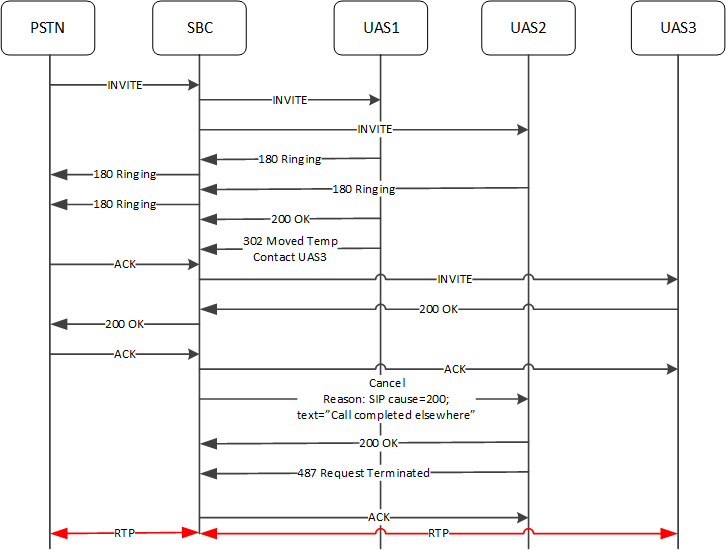
Parallel Forking and PRACK
In this scenario, the ESBC and both UAS end points support PRACK, but the PSTN does not. The ESBC supports the requirements the end points send for the PSTN and supports the PRACK transactions.
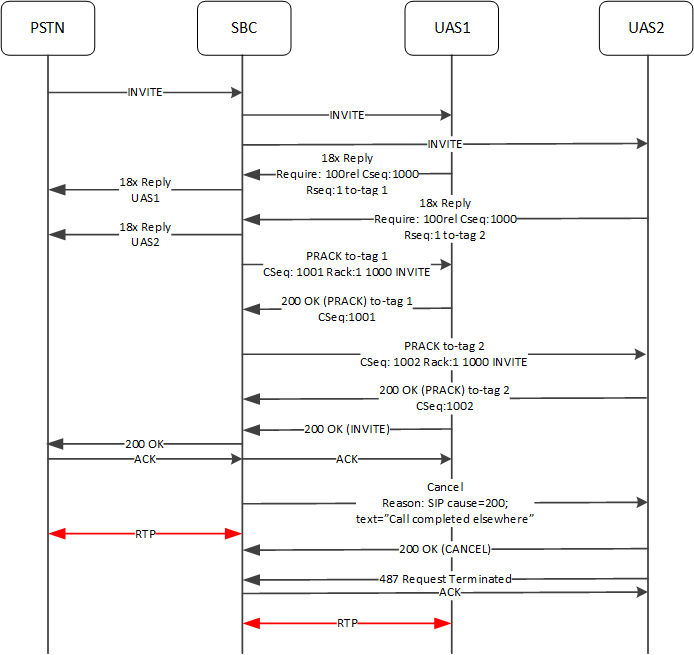
Parallel Forking and PRACK2
In this scenario, the ESBC and the PSTN support PRACK, but both UAS end points do not. The PSTN generates the 100-rel requirement and the ESBC supports the requirement and the PRACK transactions on behalf of the end points.
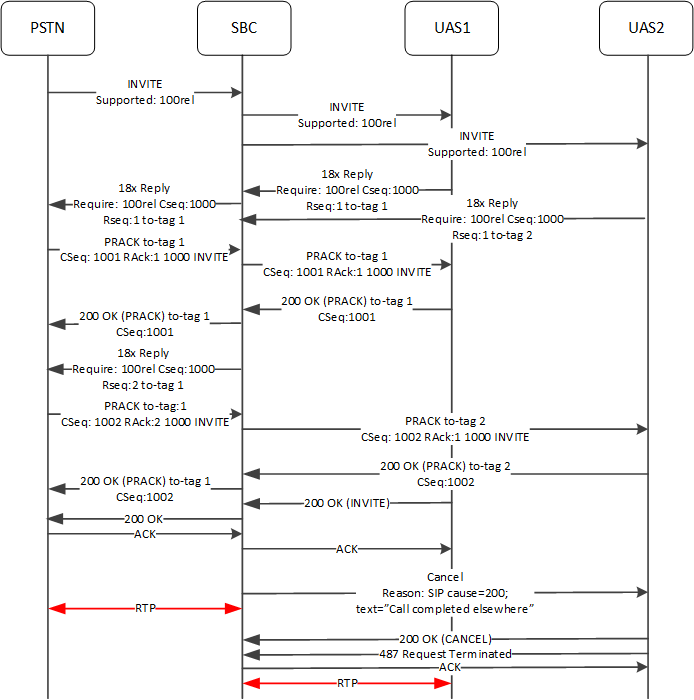
Parallel Forking and Early Media
An important feature to support within parallel forking is early media. This next call flow shows all three destinations UAS1,UAS2 and UAS3 sending early media. The ESBC is supporting this media, relaying it to the PSTN while the scenario finds an end station, UAS2 in this case, to answer the call. After the 200 OK comes from UAS2, the ESBC cancels the setups to UAS1 and UAS3.
Key to this feature is the ESBC latching to the most recent early (eg, the last) SDP/media flow when multiple endpoints (UAS below) send early SDP/media. The ESBC makes any previous early media inactive, preventing the PSTN from having to handle multiple early media flows simultaneously.
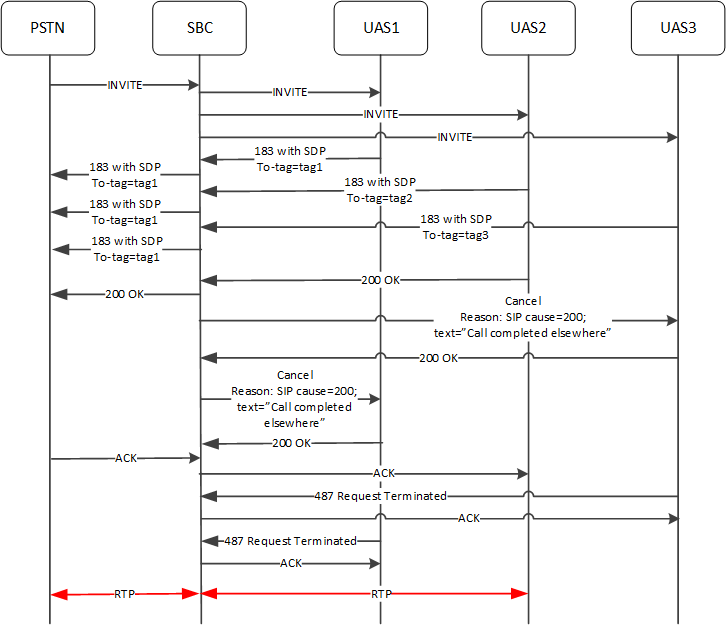
Parallel Forking to a Session Agent Group
In this scenario, the ESBC receives an INVITE that triggers a local policy to UAS1 and a local policy to a Session Agent Group. Although a session agent group can participate as a parallel forking target, it's members do not, with the ESBC instead cycling through all other SAG members serially. Therefore, the ESBC attempts to reach UAS1 and SAG:SA1 first, in parallel. In this flow, SAG:SA1 accepts the call and sends a 200 OK. So the ESBC CANCELs UAS1 and never contacts SAG:SA2.
